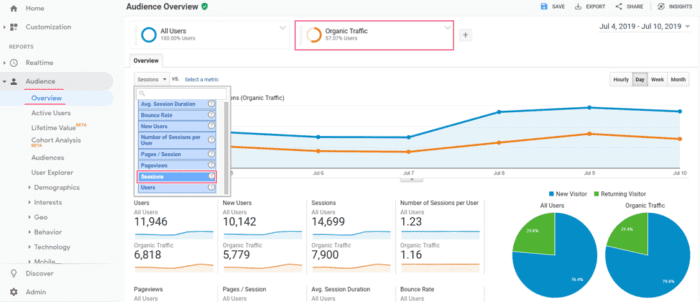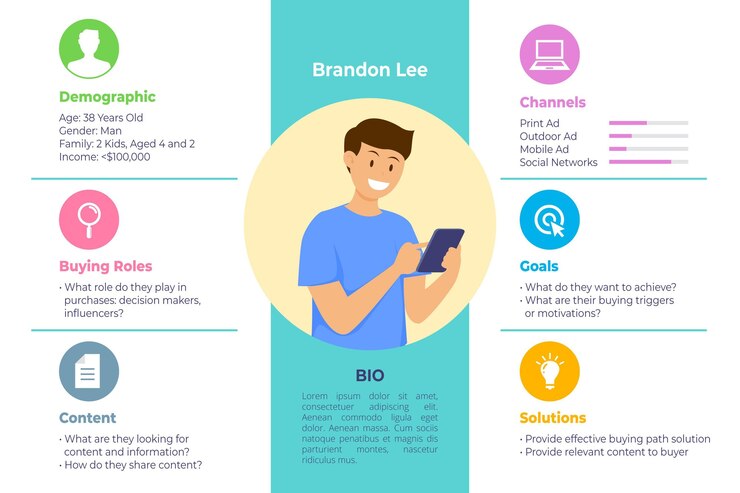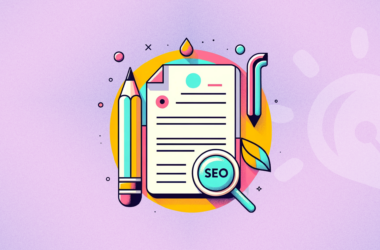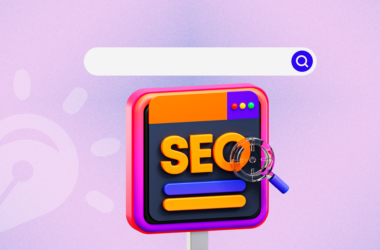The competition in the SaaS sector is beyond fierce—it’s relentless. Success hinges not only on the innovation of your product but also on your ability to create a robust lead-generation pipeline.
According to Forbes, 74% of companies report an increase in lead generation through content marketing. Add to this the fact that organic search accounts for 51% of content consumption, and you can gauge its critical importance. The numbers highlight the undeniable impact and effectiveness of content marketing strategies in the SaaS industry.
SaaS content writing stands out as one of the most effective strategies to achieve this and gain a competitive edge. It not only helps attract prospects but also plays a crucial role in converting them into valuable leads.
Read on as we explore the intricacies of content writing for SaaS and discuss how it can be leveraged to not only attract but also convert leads effectively. Let’s dive in!
The Impact of Content in SaaS

When it comes to SaaS, having an innovative and feature-rich product alone won’t suffice if you lack the visibility to attract potential prospects. That is where content comes into the picture.
Content serves as the gateway to securing prime real estate on search engine results pages (SERPs)—specifically, the coveted first page. Why is this important, you may ask? The answer is that only 0.44% of internet search users ever get to page two of the SERPs.
The first few organic listings on page one also boast an average click-through rate of nearly 28%. This makes it easier to comprehend why 45% of B2B marketers plan on increasing their content marketing budgets this year.
Additionally, content plays a crucial role in establishing thought leadership and credibility within the SaaS industry. It allows SaaS companies to educate their target audience, address pain points, and showcase expertise, which ultimately helps them build trust and rapport with potential customers.
How to Create Compelling SaaS Content for Effective Lead Generation?
When it comes to B2B SaaS content writing, creating engaging content that drives effective lead generation requires a strategic approach.
Here’s a comprehensive guide to crafting SaaS content that attracts and converts leads:
1. Understand Your Target Audience

The foundational step to effective content writing for SaaS begins with a deep understanding of your target audience (TA).
While this may seem obvious, unlike generic content, SaaS content writing involves a lot more complexity.
Here’s why:
- Your target audience is not looking for a product; they are seeking a solution to a specific problem.
- Generic content is more focused on entertainment and awareness, SaaS content needs to be tailored in a manner that leads your target audience further down the sales funnel.
- There are several stakeholders involved in the decision-making process of investing in a SaaS product. Your content will have to target everyone, from the primary decision-makers to the users who benefit most from your solution.
So how do you get to know your target audience better? This answer is Customer analysis. Simply put, customer analysis involves using your existing customer data from all touchpoints to understand their pain points and needs.
The next step is to build detailed customer profiles, which, in essence, are fictional representations of your ideal customer base. At this stage, your focus should be on demographics, firmographics, and general buyer behavior.
Once you have this data, your focus should shift to building elaborate buyer personas. The data involved here includes psychographics, preferred information channels, and challenges, to name a few.
With these personas in place, you will now be equipped with all the information you need on how to tailor your SaaS content writing for maximum impact.
2. Craft Compelling Headlines and Introductions
No matter how well-written the meat of your content is, it won’t bear any fruit if you cannot get your target audience to read it in the first place.
The internet is awash with content, and in fact, we generate about 0.33 Zettabytes of data (that’s about 328.77 million terabytes if you are unfamiliar with the term) every single day.
Swiping every few seconds is now muscle memory, thanks to the abundance and excessive consumption of short-form content. That leaves you a few seconds to capture your target audience’s attention and here is why you need to pay special attention to your headlines and introductions.
Your content’s headlines are the first touchpoint that captures attention and determines whether a reader will engage further with your content.
Here are a couple of key pointers to keep in mind when crafting engaging headlines:
- Your headline should be clear, concise, and reflect your value proposition. Prioritize clarity of creativity.
- Use headlines that create FOMO and use action verbs that will encourage users to interact with your content.
Once your headline has grabbed your target audience’s attention, your introduction should continue to hold that attention, as it will set the stage for the value your content will provide.
Craft your introduction with the following points in mind:
- Start with a hook that piques your reader’s curiosity. This can be a fact or a question that highlights the customer’s pain point.
- Then, quickly establish relevance and demonstrate how your product can address that pain point. A sneak peek of the benefits can be that gentle nudge to encourage them to engage further with your content.
3. Structure Your Content for Lead Generation

Your next order of business is to source your content in a manner that makes it a lead-generation powerhouse.
If you are writing top-of-the-funnel content:
- Your content should capture the attention of potential leads with broad, informative topics that address common industry challenges.
- The agenda here is to establish authority and trust and lay the foundations for deeper engagement.
As leads move down the funnel, your content must evolve to reflect their journey. In the middle, focus on demonstrating the unique benefits of your SaaS solution.
- Highlight any case studies and comparative analyses to differentiate your offering from the competition.
- Your content here should start to address more specific problems, and you should align your content with the nuanced needs of your audience.
If you are writing Bottom of the Funnel, content should be conversion-oriented. Here, use detailed product guides, free trial offers, and compelling calls to action. The goal here is to reassure leads that your solution is the right choice and to provide them with all the necessary information to make an informed decision.
You can also tailor individual pieces of content to contain all three types of content strategically. The key is to be informative and walk the fine line between being persuasive and not being too salesy.
4. Utilize SEO Best Practices for SaaS Content
While there is no specific playbook for SaaS content writing, the following SEO best practices can have an impact on how you rank on search engine results pages (SERP):
1. Focus on understanding user intent and semantics
The nature of search is changing and so are search engines themselves. Google’s Search Generative Experience (SGE) is but a snippet of where we are headed. Keywords and keyword stuffing no longer cut the mustard, you need to understand user intent and the context behind searches and ensure your content addresses the users’s specific problems.
Pro Tip: Google’s algorithm takes into consideration over 200 parameters to rank content and it regularly updates it too. (There have been about 36 changes in the past five years.) Stay on top of these updates and alter your SaaS content writing strategy as needed.
2. Concentrate on the mobile ecosystem
As of March 2024, the Mobile vs Desktop Market share stands at 59.91% vs 37.89%. Website visits on mobile were nearly 4x as much as on desktops in 2023 (~40 billion vs ~10 billion). In short, Google prioritizes content optimized for mobile devices.
Make sure your content is optimized for mobile devices. That said, the focus should not only be on readability, you also need to take into account responsiveness, security, and the overall user experience to rank higher.
5. Utilize The Power Of Visuals In Your SaaS Content Writing
Visuals, when used strategically, are equally, if not more effective, than text when it comes to SaaS content writing.
That said, here’s how you can leverage them to prove your outcomes:
- Use infographics and charts to distill complex data into digestible visuals. This can be a game-changer for sales content writing.
- Maintain a consistent use of brand colors, logos, and imagery to create your unique visual identity to enhance brand recognition and recall among your audience.
- Incorporate screenshots and product demos to showcase your SaaS solution in action and provide a tangible understanding of its features and benefits.
- Utilize videos to explain concepts, demonstrate processes, or share customer testimonials in a more engaging and dynamic format.
In short, visuals possess the unique ability to engage with your target audience in a manner that can evoke a reaction and send them further into the sales pipeline.
6. Measure the Success of Your Content
Just like any marketing strategy, data is king when it comes to B2B SaaS content writing.
Tracking key metrics will give you a holistic view of your content’s real-world impact and give you the insights you need to refine your strategy for maximum lead generation.
For example, a high bounce rate (percentage of visitors leaving after one page) could indicate your content isn’t addressing the user’s intent. This insight directs you to revisit and optimize the content to better align with your audience’s needs.
Conversely, a significant increase in time spent on your website or downloads of gated content suggests that you are on the right path. You can recreate what is working in those sections of your SaaS content writing onto those bits of content that aren’t performing as expected.
Take Your SaaS Content Writing up a Notch!
In the highly competitive sphere of SaaS, your content can make all the difference between standing out and getting lost in the crowd.
The points covered in this blog will help you elevate your SaaS content-writing game, but remember, organic growth does not happen overnight. You need to consistently apply these strategies and stay committed to refining your approach over time.
If you’re seeking professional writing services, consider Wittypen’s SaaS Content Writing Services. Our team can assist you in crafting a winning content strategy that not only attracts attention but also engages and converts your target audience effectively.
Let’s work together to make your SaaS content shine!









